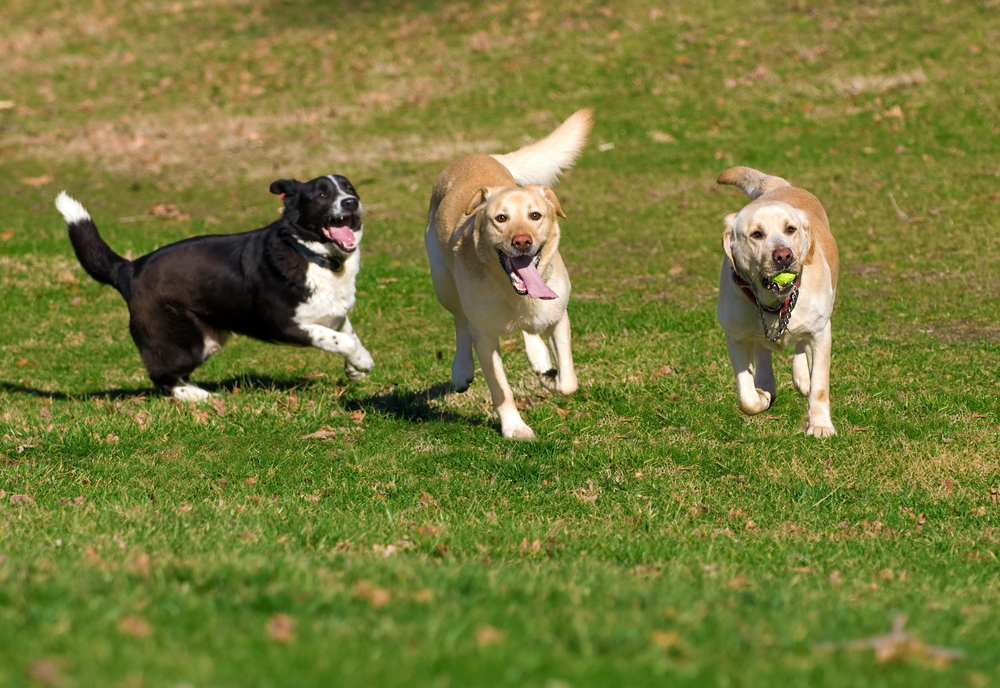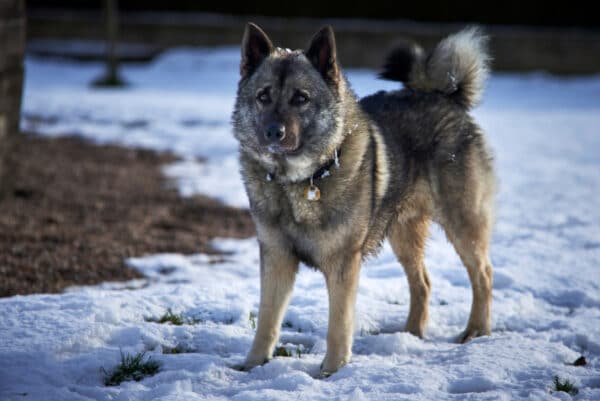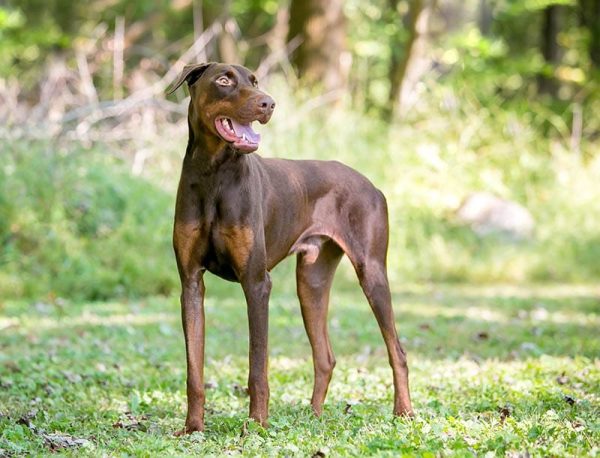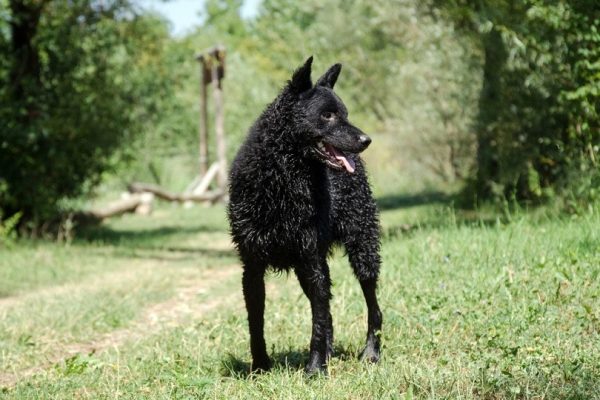In this article
When you look at a dog like a Pug or a Chihuahua, it’s hard to imagine that these creatures ever evolved from the gray wolf. Gray wolves are substantially sized with muscular bodies and pointed features.
While some of our domestic canines still resemble their genetic backgrounds, most have evolved far past their origins. How did it happen? What did selective breeding change in the dog world and how do these practices still impact breeds today? Let’s explore.

The Origin of Domestic Dogs
The domestic dog, otherwise known as the Canis lupus familiaris, is one of the most popular animals in the world. Not only are they wonderful companions, but they can help us with so many tasks, gladly standing beside us.
The origin of dogs seems to be a pretty controversial subject. A single Google search may yield several different answers, leaving you empty-handed. It is a very elusive history that doesn’t seem to have many scientifically solid answers.
It seems that the domestic dog left their wild ancestors on a journey toward being man’s best friend in East Asia. There have been comprehensive genetic analyses into the matter, and specific studies traced the DNA.
From what scientists can conclude, domestic dogs descended from a now-extinct group of gray wolves in the Old World. However, the exact lineage remains obscure—a mystery to man. Today, the debate is still widely challenged with unexplained geographic origins of monophylogeny and polygeny.
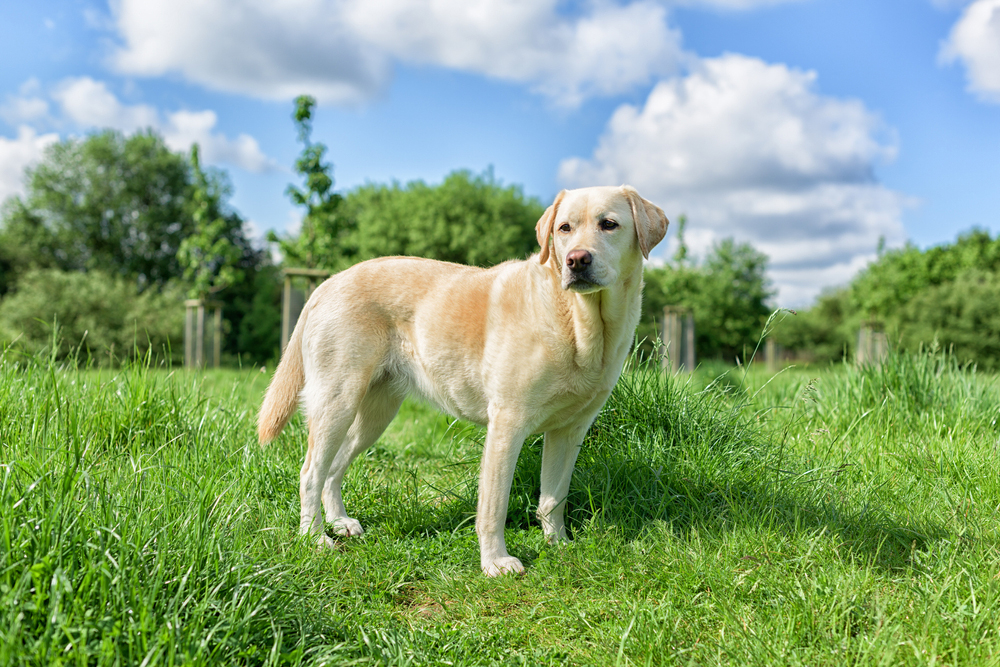
What Causes the Scientific Community to Disagree?
It might be pretty aggravating if you can’t get the scientific backing as to where our domestic dogs came from. With the lack of solid DNA structures, there are several different methods of research. Because research varies so drastically between scientific groups, it can cause the evidence to be loose at best.
There is a lot to consider, including the origin and evolutionary trajectories of dogs, DNA sequences, backcrossing, and other genetic mythic manipulation factors.

The Modern Canine
The canine has evolved so much over the years, particularly since transitioning from worker bee to indoor pet.
1800s
During the 1800s, life was anything but pleasurable for dogs. Dogs did not have the luxury of staying in homes most of the time. Instead, they took to the streets, eating scraps where they could.
A slight few were treated with common decency and respect and kept as pets, but this was usually reserved for the rich. Most of the time, dogs would be strolling the streets, falling victim to cruelty and abuse.
Some people would even beat or shoot dogs on site due to overpopulation. Because rabies became such a known phenomenon during this time, people were very scared of dogs and typically would kill strays out of fear.
1900s
During the 1900s, breeding really took off as many dog breeds were recovered from almost being lost due to war. Breeders worked diligently to produce genetically sound, healthy specimens that would go on to have champion bloodlines.
During the 1900s, dogs went from being seen as lesser to being invited into many people’s homes. They started their journey into a life of household pets, worming their way into people’s hearts.
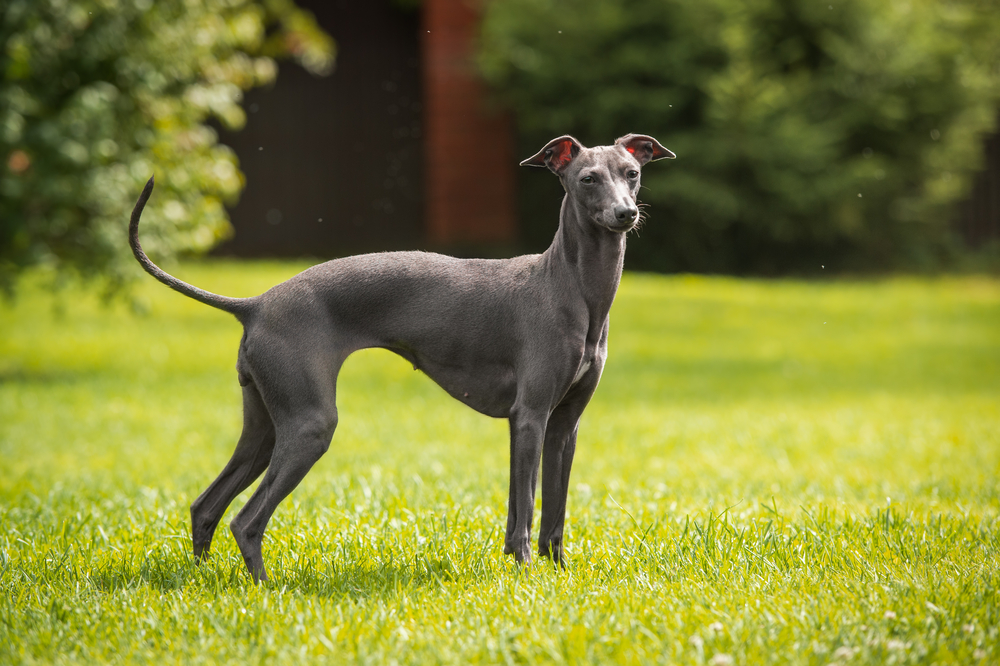
2000s
In the early 2000s, people were definitely welcoming dogs into their home at steady rates. Not only were dogs becoming companion pets inside of the home, but they were really revered for their usefulness for police work and military task training.
Their development grew so much that most people had a dog at least at some point in their lifetime. It’s estimated that over 60 million households own at least one dog.
Today
We are still living in the 2000s today, but even since the early 2000s, dogs have gone from being incredibly popular to being seen as a family member.
Not only are dogs becoming more common in US households, and all over the world, but they are being spoiled as well! It seems that our dogs have finally persevered through the years and are now getting the special treatment they deserve.
One thing is for certain: Dogs today have shown us that their companionship is nothing short of amazing. They can help us with so many different tasks, provide us with emotional support, and fill our lives with laughter and companionship.
One thing’s for sure, humans definitely don’t deserve dogs. But we are certainly glad we have them.

Oldest Breeds of Dogs
The numbers below are basic estimates, as no one knows exactly the length of origin for each one of these breeds. It is simply a speculation based on scientific study and an estimate at best. Let’s learn a little bit more about our ancient breeds and what they’re like today.
Akita Inu
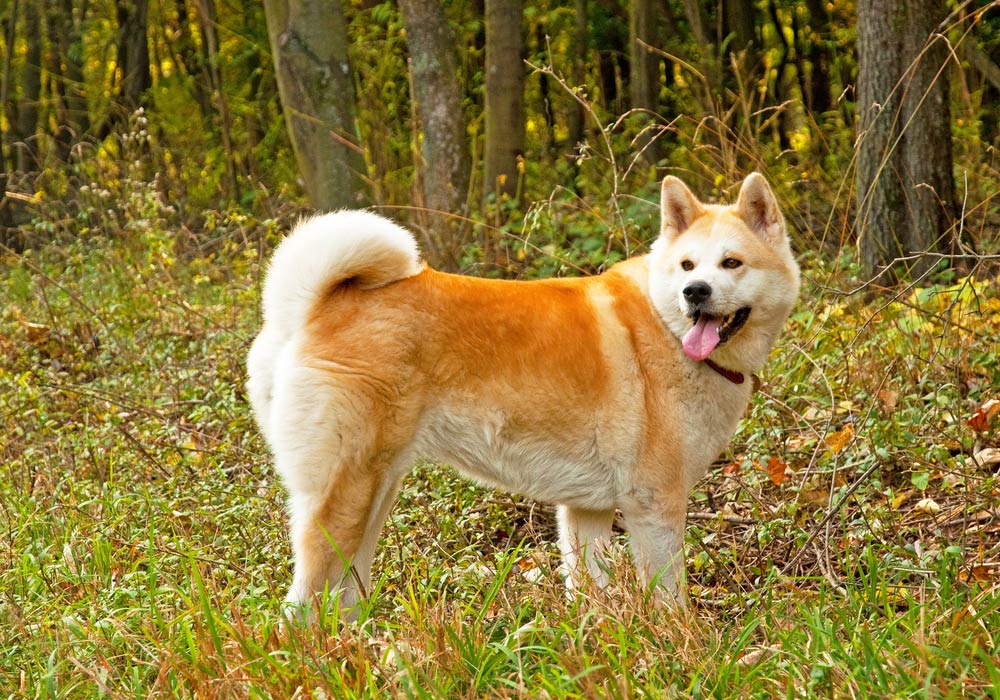
The daring, bold Akita Inu dates as far back as 1,000 years at least. If you look at the modern Akita, you can still see the major resemblance to their wolf ancestors. The Akita is a powerhouse of muscle, strength, and determination.
Akitas are in the working class of dogs. Similar to sled dogs, these brutes love having a job to do. They are admired for their strength and courage.
Greenland Sled Dog
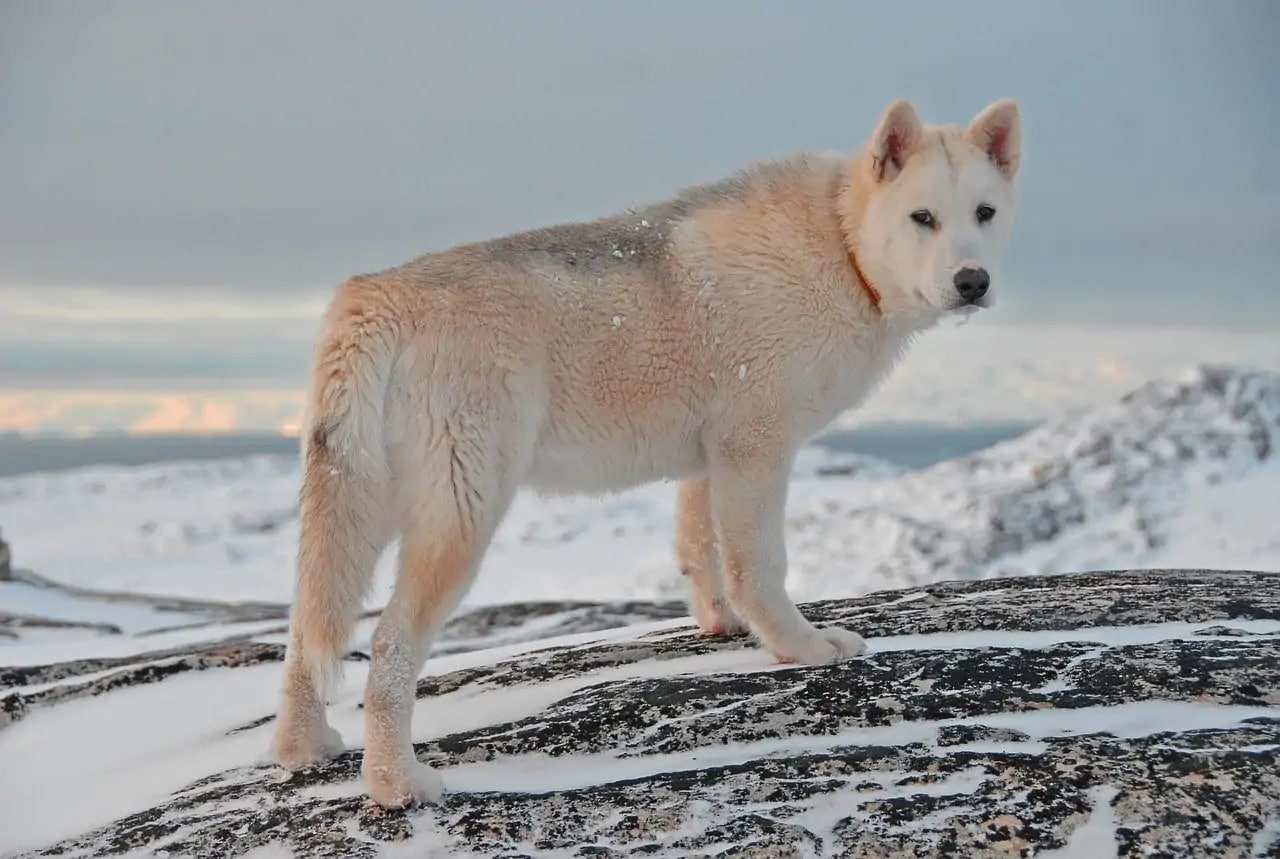
This dog traces across history more than any other Arctic breed, with ancestry dating back nearly 10,000 years. They originated on Zhokhov Island in Siberia and helped the locals with transport and work.
The Greenland Sled Dog was an original sled dog. It came to America by the Thule people over 1,000 years ago. These pups were a staple in their means of transportation.
The Greenland Sled Dog is a stunning specimen. If you take a look into their serious expressions, you can see their intelligence and raw power.
Afghan Hound
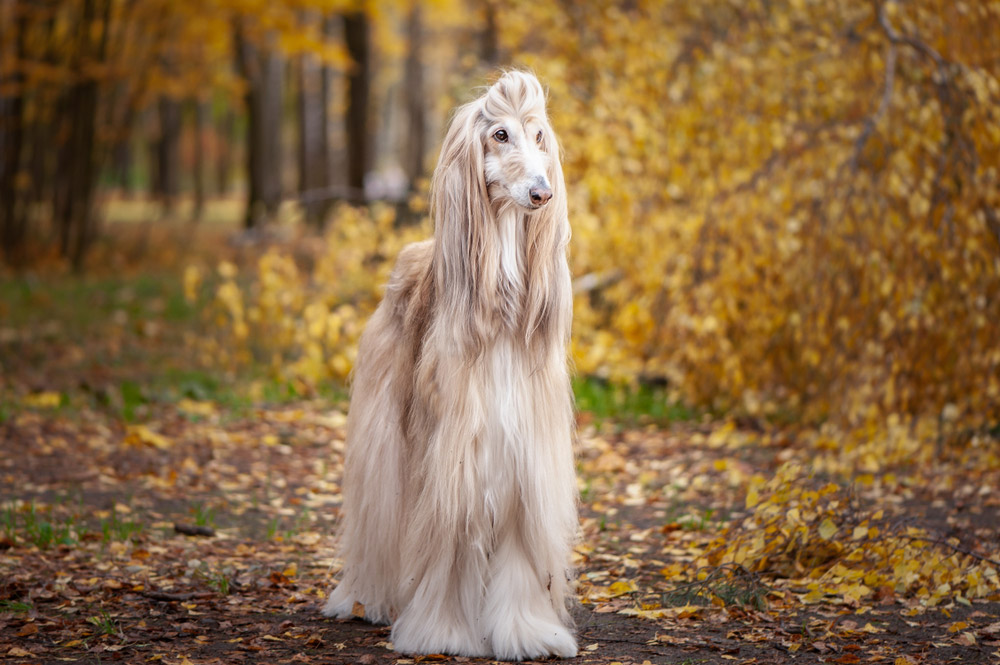
The Afghan Hound has some major discrepancies in origin. Some argue these dogs are several thousand years old, while others claim there is no real evidence to support this. Regardless, these long-haired sighthounds were brought to Europe from Afghanistan in the 19th century.
While these dogs are classically different from wolves, they are closely related. With their regal silky appearance and trademark curled tail, the Afghan Hound remains a rare but respected breed today.
Greyhound
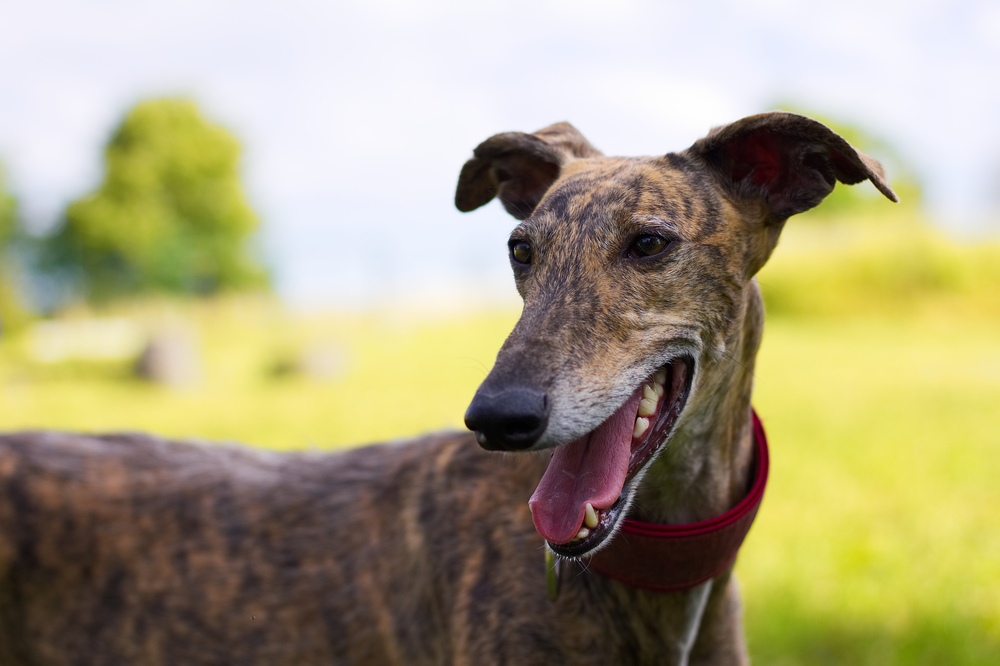
The ancient Greyhound impresses still to this day with its speed, agility, and focus. The dog looks very different from their wild ancestors. Rather than being sturdy and bulky, these dogs appear thin, gaunt, and fragile.
Today, the Greyhound is a pretty popular dog and they still race for competition. However, much controversy surrounds this practice, as many consider it borderline animal abuse.
Basenji
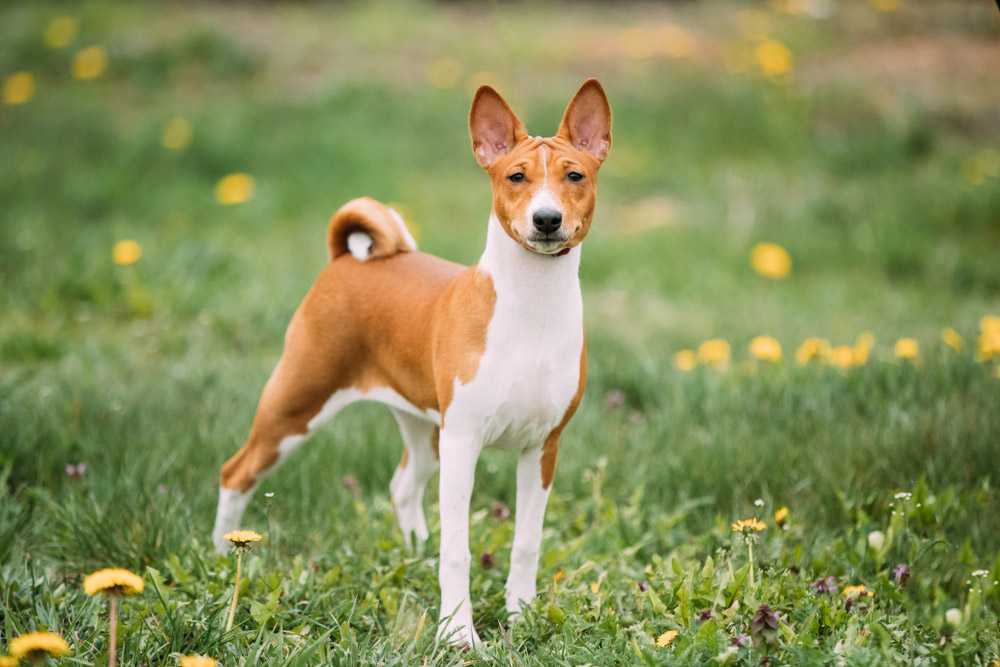
Known as the ‘barkless’ dog, the Basenji is an ancient breed that still thrives today. Cave paintings depicting the marvelous Basenji date back to 6000 BC in Libya, and Egyptians started documenting them around 3000 BC.
This dog is revered for its quiet but watchful nature. Basenjis are known to be very curious, energetic, and intelligent. They need plenty of exercise and thrive in households where they are stimulated and affectionate.
Tibetan Mastiff
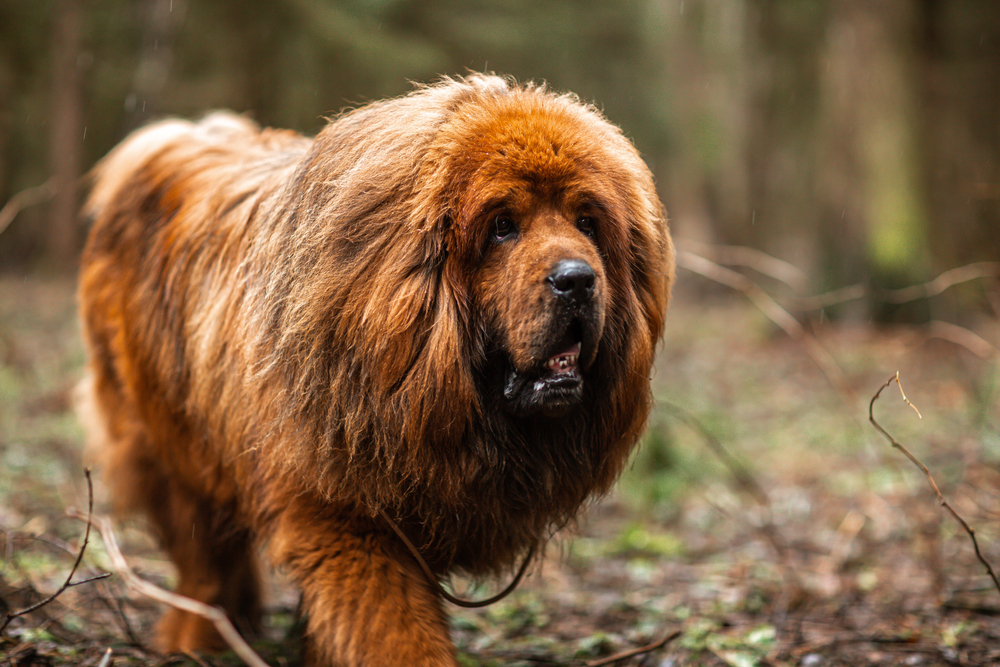
Interestingly, when you trace back the lineage of the Tibetan Mastiff, DNA studies show that this breed descended from wolves roughly 58,000 years ago. More modern-day dogs only date back to roughly 42,000 years ago.
The breed itself is substantial. They tend to be very aloof and protective, so these are certainly not for the faint of heart. Only experienced, courageous owners should own one of these fierce canines. These beasts make impeccable guard dogs.
Saluki
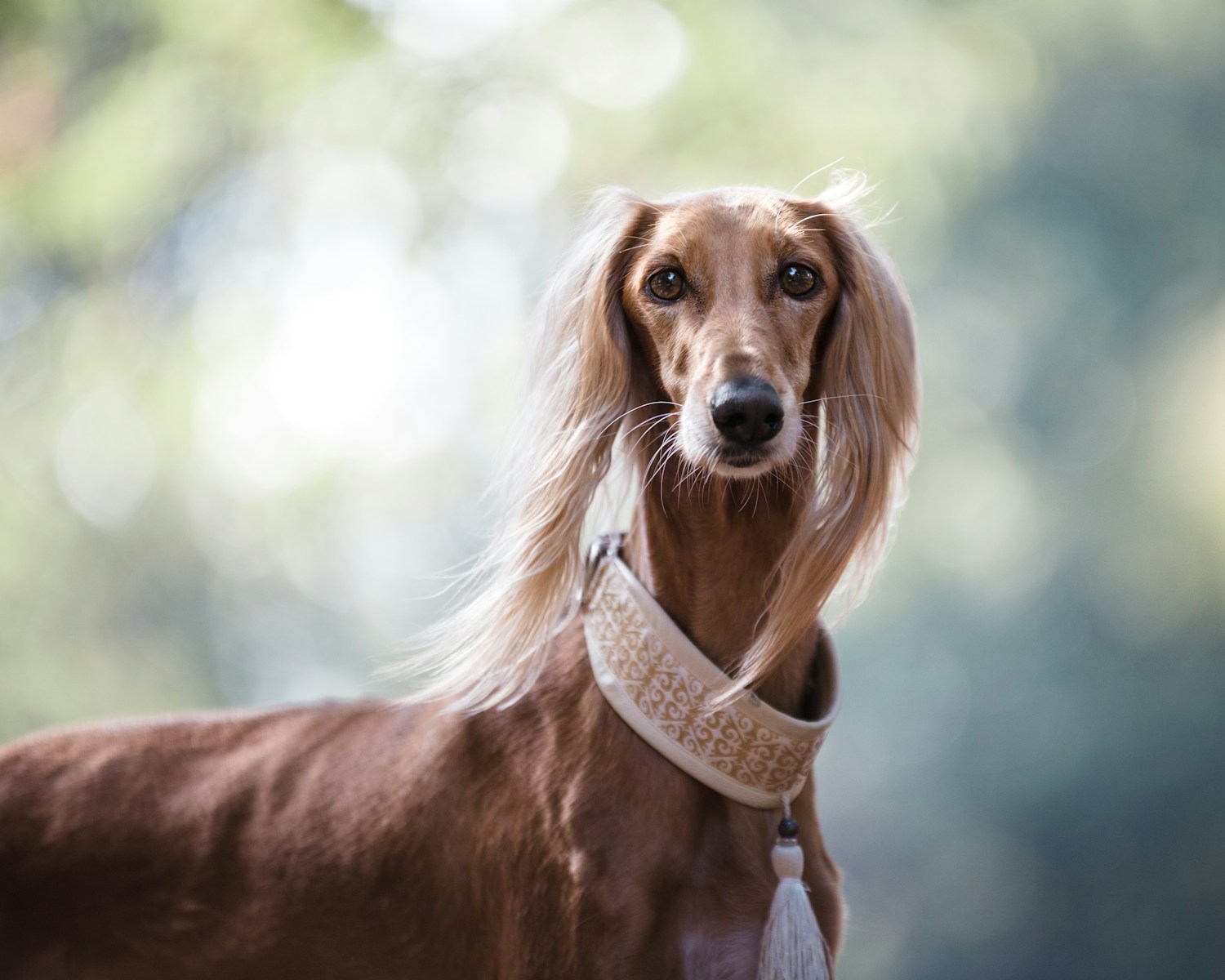
The lovely, lean Saluki is among the oldest dog breeds in all the world. The experts that have researched the subject claim that they believe the Saluki was around as early as 7000 BC. These dogs are sight hounds, typically owned by royal Egyptian Pharaohs and other kings throughout history.
Chow Chow
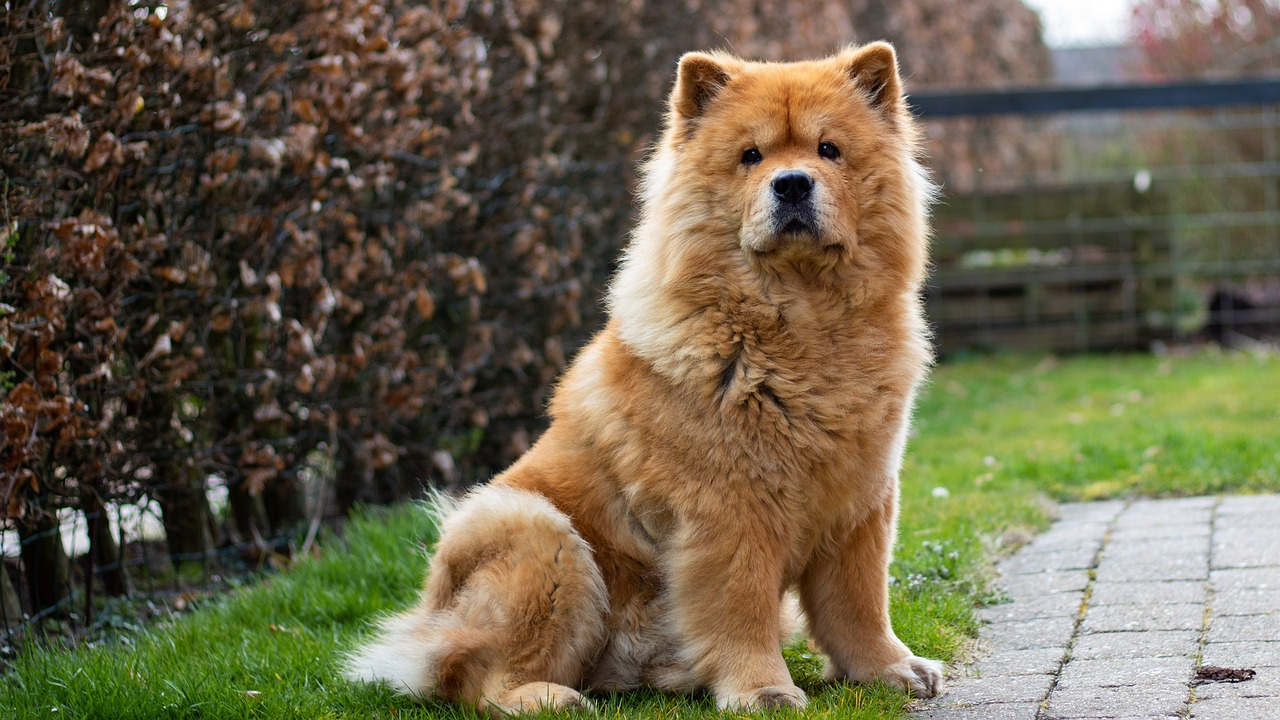
Experts believe that the bear-like Chow Chow originated from Chinese indigenous dogs as early as 8,300 years ago. However, some argue that there are traces of them as far as 11,000 years ago near the Yangtze River.
These dogs are still relatively common today. Because of their protective nature and natural suspicion of strangers, it can be hard to socialize these dogs. They require a knowledgeable owner who can handle the breed’s challenges.

Conclusion
Now you know a little backstory about dogs. Is their lineage mysterious? Absolutely! It’s hard to tell exactly when wolves decided that they wanted to stop being predators and start being people’s friends.
It’s amazing how we have developed as many interesting breeds as we have. Dogs will continue to inspire humans and provide awesome companionship and service—only now can we appreciate them as we should.
See also:
- How Much of ASPCA Donations Go to Animals? Facts & FAQ
- Are Dogs Dangerous? 11 Vet-Verified Facts & Statistics
Featured Image Credit: Stanimir G.Stoev, Shutterstock
